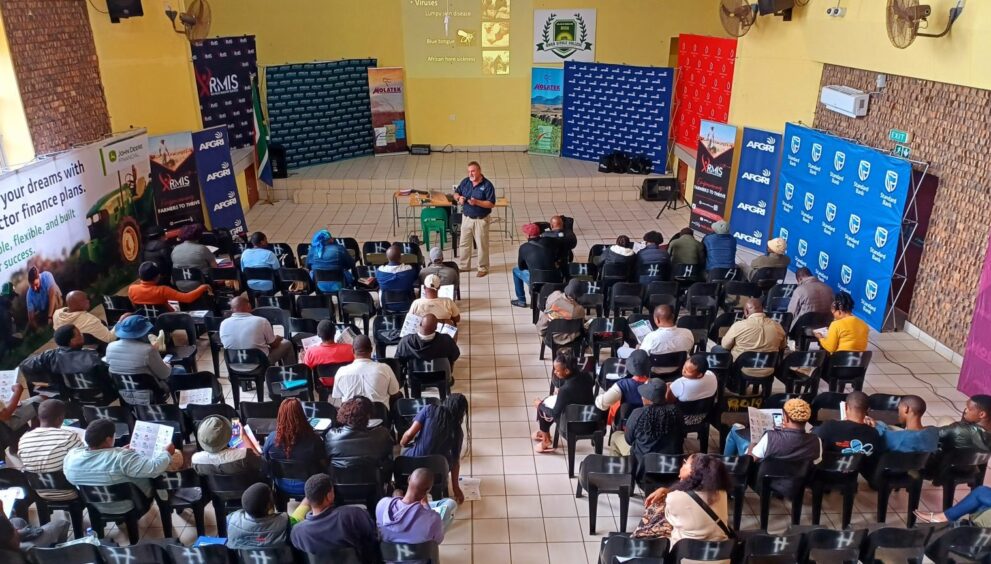The drought in Zambia and other countries in southern Africa presents an opportunity for stakeholders and farmers to reconsider the importance of insurance.
This is according to Choolwe Sianyinda, chief operating officer of Hollard in Zambia, who said insurance can play a crucial role in providing a safety net to protect against such disasters.
Choolwe Sianyinda, chief operating officer of Hollard in Zambia, believes insurance can play a crucial role in providing a safety net to protect farmers against disasters brought about by climate change.
Sianyinda said the long-term sustainability of Zambia’s agricultural sector and the country’s socioeconomic development prospects depend on adopting adequate insurance coverage.
“This is necessary to mitigate the impact of increasingly volatile and erratic weather patterns, largely attributed to climate change, which is adding extra pressure on food security,” he said.
Sianyinda referred to an African Development Bank report which said agriculture in Zambia is the primary source of raw materials for the manufacturing and food processing industries.
The sector provides job opportunities, particularly for women and youth, through downstream industries. Additionally, agriculture contributes to Zambia’s export earnings, accounting for about 29% of non-traditional exports and 7% of total exports.
“Hence, agriculture plays a vital role in fostering Zambia’s vision of diversified and inclusive national socioeconomic transformation,” said Sianyinda.
The United Nations Food and Agriculture Organization (FAO) has identified climate change as a significant challenge to agricultural development in Africa. An FAO report says the global financial downturn and food insecurity have hindered rural development, leading to persistent high levels of hunger and malnutrition.
Without substantial adaptation, the effects of climate change on agriculture are expected to worsen Africa’s food crisis, restricting food access and hampering efforts to increase food productivity.
“Agriculture is a key area where inclusive and sustainable insurance solutions can ensure the long-term sustainability of the sector,” said Sianyinda.
“To achieve this, we are seeking partnerships with financial institutions willing to provide credit to farmers, with insurance acting as a safety net to help farmers repay their loans in the event of crop failure. This approach aims to build resilience among farmers and protect their livelihoods.”
According to Hollard, policy adaptations and investment are crucial for driving the development of agriculture in Zambia. Both smallholder and commercial farmers need insurance coverage for their farming inputs, tools or equipment, and produce.
Agriculture contributes to Zambia’s export earnings, accounting for about 29% of non-traditional exports and 7% of total exports.
Sianyinda said commercial farmers use indemnity-based insurance, while smallholder farmers have access to index insurance to protect their crops.
He emphasised the need for more education and awareness among farmers about the benefits of insurance in dealing with climate change and natural disasters. “Essential aspects include training, customer-centric products, improved access to telecommunications and digital agriculture, and expanding distribution channels to reach more smallholder farmers.”
To address these challenges, he suggested promoting the adoption of insurance as a coping strategy in times of disaster. He said improved connectivity in the telecoms sector would encourage digital agriculture, simplify farmers’ access to technology like smartphones, provide access to accurate meteorological data and information, and make it easier for farmers to collaborate with financial partners to make access to funding easier and more affordable.
As a part of a group of insurers, Hollard provides coverage for more than a million Zambian smallholder farmers through the Farmer Input Support Programme (FISP).
“This is a government initiative aimed at improving the accessibility of agricultural inputs for small-scale farmers at a reduced cost, thereby enhancing their productivity,” said Sianyinda.
“As a part of the consortium, we offer index insurance to over 97 000 households enrolled in food security packs, and over 23 000 households in the sustainable agriculture financing facility (credit facility window).”
Additionally, Hollard has partnered with Financial Sector Deepening Zambia (FSDZ) to introduce an inclusive crop insurance scheme, offering area yield indices to help smallholder farmers manage the impact of climate change, droughts, pests, floods and other natural disasters. He said the FSDZ has been providing technical assistance and subsidies to the farmers in the programme.
According to Sianyinda, between 2021 and 2022 Hollard paid out claims of up to ZMW1 656 904 to farmers. This increased to ZMW16 136 309 between 2022 and 2023.
Agriculture insurance is essential for mitigating risks, enabling farmers to protect their businesses from financial losses and efficiently manage their production and income by reducing uncertainty.
“At the heart of what insurance should deliver is enabling communities, and in this case farmers, to create better futures and become sustainable, even in the face of risk factors, from natural disasters and climate change to manmade disasters,” Sianyinda said.
“Our goal is to not only to provide necessary assistance, but also to help older farmers transition from subsistence to commercial farming. We are actively seeking additional partners willing to work with us.
“The digital agriculture industry is seeking ways to ensure farmers have smartphones and technology at their fingertips.
“Our approach to offering affordable and accessible solutions for farmers, especially smallholders, involves strategic partnerships. This includes collaborating with insurance companies, co-insuring, working with technical partners like KMD and Pula, and partnering with Vision Funds and Zambia Cooperative Federations to subsidise insurance premiums.
“Our vision includes investing in digital agriculture by providing innovative onboarding apps to smallholder farmers. We have implemented an agricultural onboarding app for agents, improving accessibility and efficiency.
“In addition, we are exploring ways to enable farmers to take part in digital agriculture platforms, using affordable smartphones. We want to play a role in supporting small-scale farmers into becoming commercial farmers by providing them the tools to enable their sustainability.”




